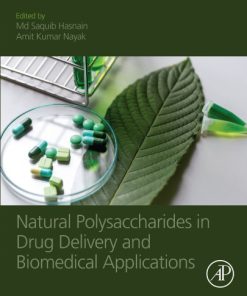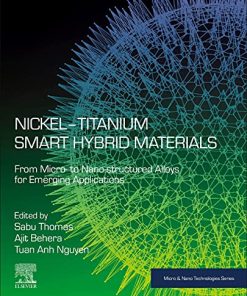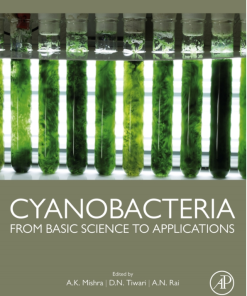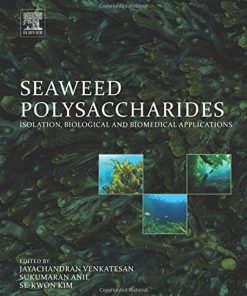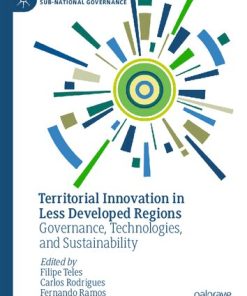Innovation in Nano polysaccharides for Eco sustainability From Science to Industrial Applications 1st edition by Preeti Singh, Kaiser Manzoor, Saiqa Ikram, Pratheep Kumar Annamalai 0128234458 9780128234457
$50.00 Original price was: $50.00.$25.00Current price is: $25.00.
Innovation in Nano-polysaccharides for Eco-sustainability: From Science to Industrial Applications 1st edition by Preeti Singh, Kaiser Manzoor, Saiqa Ikram, Pratheep Kumar Annamalai – Ebook PDF Instant Download/DeliveryISBN: 0128234458, 9780128234457
Full download Innovation in Nano-polysaccharides for Eco-sustainability: From Science to Industrial Applications 1st edition after payment.
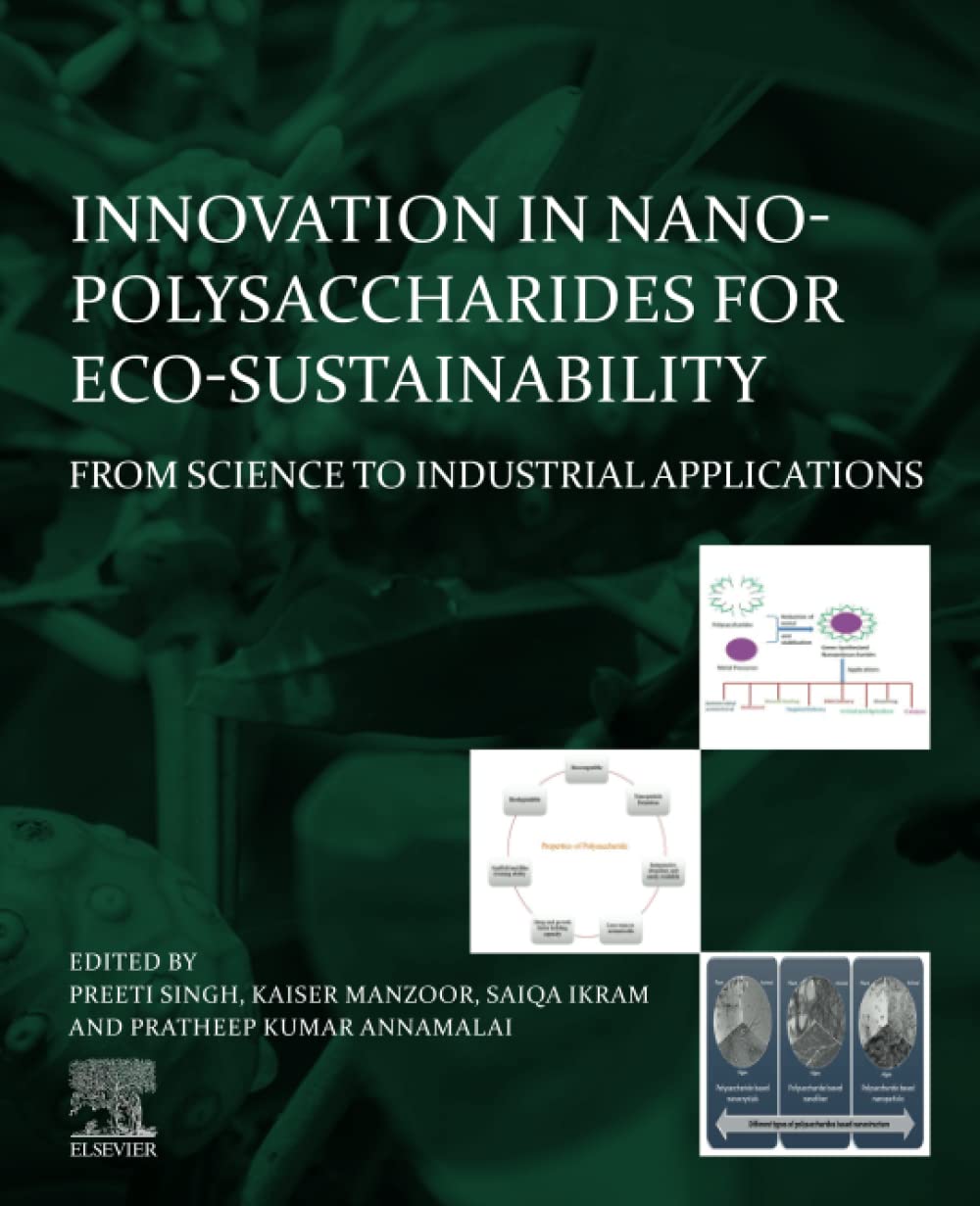
Product details:
ISBN-10 : 0128234458
ISBN-13 : 9780128234457
Author : Preeti Singh, Kaiser Manzoor, Saiqa Ikram, Pratheep Kumar Annamalai
Innovation in Nano-polysaccharides for Eco-sustainability: From Science to Industrial Applications presents fundamentals, advanced preparation methods, and novel applications for polysaccharide-based nanomaterials. Sections cover the fundamental aspects of polysaccharides and nano-polysaccharides, including their structure and properties, surface modification, processing and characterization. Key considerations are explained in detail, including the connection between the substituents of polysaccharides and their resulting physical properties, renewable resources, their sustainable utilization, and specific high value applications, such as pharmaceuticals, photocatalysts, energy, and wastewater treatment, and more.
Innovation in Nano-polysaccharides for Eco-sustainability: From Science to Industrial Applications 1st Table of contents:
Chapter 1. Nanopolysaccharides (polysaccharide-based nanoparticles): perspectives and applications
Abstract
1.1 Introduction and classification of polysaccharides
1.2 Composition of nanopolysaccharides
1.3 Characterization techniques used for nanopolysaccharides
1.4 Applications of nanopolysaccharides
1.5 Conclusions and future perspective
Acknowledgments
References
Chapter 2. Nanopolysaccharides: fundamentals, isolation, and applications
Abstract
2.1 Introduction
2.2 Fundamentals of nanostructured polysaccharides from plant-based resources
2.3 Fundamentals of nanostructured polysaccharides from animal-based resources
2.4 Fundamentals of nanostructured polysaccharides from algae resources
2.5 Applications
2.6 Conclusion
References
Chapter 3. Fundamentals of processing and characterization of polysaccharide nanocrystal–based materials
Abstract
3.1 Introduction
3.2 Characterization
3.3 Fourier transform infrared spectroscopy
3.4 SEM/TEM
3.5 X-ray diffraction
3.6 Anticancerous activities
3.7 Conclusion
References
Chapter 4. The composition of polysaccharides: monosaccharides and binding, group decorating, polysaccharides chains
Abstract
4.1 Introduction
4.2 Carbohydrates and its classification
4.3 Composition and linkages in polysaccharides
4.4 Decorating groups in polysaccharides
4.5 Polysaccharides chains
4.6 Binding group and linkages of polysaccharide
4.7 Summary
References
Chapter 5. Understanding how the substituents of polysaccharides influence physical properties
Abstract
5.1 Introduction
5.2 Characteristics and classification of polysaccharides
5.3 Influence of polysaccharide substituents on physical properties
5.4 Impact of substituents of functionalized polysaccharide derivatives
5.5 Understanding the pattern of linkage and conformation of carbohydrates
5.6 Polysaccharides in medical applications
5.7 Conclusions and future perspectives
Acknowledgments
Declaration of competing interest
References
Chapter 6. Surface modification of polysaccharide nanocrystals
Abstract
6.1 Introduction
6.2 Surface alchemy of polysaccharide nanocrystals
6.3 Objective and strategies of surface modification
6.4 Diverse methods of surface modification of polysaccharide nanocrystals
6.5 Conclusions and future perspectives
Acknowledgment
Declaration of competing interest
References
Chapter 7. Nanostructured polysaccharide-based materials obtained from renewable resources and uses
Abstract
7.1 Introduction
7.2 Types of polysaccharide-based nanocomposites
7.3 Polysaccharides in packaging
7.4 Water treatment
7.5 Energy applications
7.6 Future prospects
References
Chapter 8. Nanopolysaccharides and pharmaceutical applications
Abstract
List of abbreviation
8.1 Introduction
8.2 Pharmaceutical applications of nanopolysaccharides
8.3 Fabrication of nanopolysaccharide used for pharmaceutical applications
8.4 Conclusions and future prospects
References
Chapter 9. Nanocellulose: a sustainable nanomaterial for controlled drug delivery applications
Abstract
9.1 Introduction
9.2 Nanocellulose-based hydrogels
9.3 Nanocellulose hydrogel-drug delivery systems
9.4 Cellulose nanocrystal hydrogels for controlled drug delivery
9.5 Cellulose nanofiber-based hydrogels for controlled drug delivery
9.6 Stimuli-responsive nanocellulose hydrogels
9.7 Conclusion and future perspectives
References
Chapter 10. Nanopolysaccharide-based composite materials for photocatalysis applications
Abstract
10.1 Introduction
10.2 Fabrication methods for nanopolysaccharides-based composite materials
10.3 Characterization of nanopolysaccharide-based composites
10.4 Applications
10.5 Future perspectives
10.6 Conclusion
Acknowledgments
Conflict of interest statement
References
Chapter 11. Polysaccharide nanocomposite materials for the removal of Methylene blue (MB) dye from water
Abstract
11.1 Introduction
11.2 Polysaccharides
11.3 Common methods applied for the nanoparticles synthesis
11.4 Methylene blue removal using polysaccharides nanocomposite materials
11.5 Conclusions and future perspectives
Acknowledgments
Conflict of interest
References
Chapter 12. Energy/bioenergy applications of polysaccharides
Abstract
12.1 Introduction
12.2 Energy/bioenergy applications
12.3 Conclusion and outlook
References
Chapter 13. Enabling polysaccharide applications for wastewater treatment using carbon nanotubes
Abstract
13.1 Introduction
13.2 Common water pollutants
13.3 Carbon nanotubes as an adsorbent for water pollutants
13.4 Polysaccharides
13.5 Positive attributes of polysaccharides and CNTs for water treatment
13.6 Conclusion
References
Chapter 14. Environmental applications of ecofriendly nanophotocatalysts: toward green nanotechnology
Abstract
14.1 Introduction
14.2 Wastewater treatment technology
14.3 Clean energy production
14.4 Conclusion
References
Chapter 15. Nanocellulose-based composites for environmental applications: a review
Abstract
15.1 Introduction
15.2 Nanocellulose-based composites for environmental applications
15.3 Nanobioadsorbents
15.4 Biosensors
15.5 Energy storage and environmental sensing
15.6 Environmental remediation system
15.7 Conclusion
People also search for Innovation in Nano-polysaccharides for Eco-sustainability: From Science to Industrial Applications 1st:
innovation in polymers llc
innovation using nanotechnology
innovation in biodegradable
ecological innovation
innovations in green nanoscience and nanotechnology
Tags: Innovation, Nano polysaccharides, Eco sustainability, From Science, Industrial Applications, Preeti Singh
You may also like…
History Business & Economics - Industries
Industrial Clusters: Knowledge, Innovation Systems and Sustainability in the UK 1st Edition
Medicine - Molecular Medicine
Natural polysaccharides in drug delivery and biomedical applications 1st Edition
Biology and other natural sciences - Microbiology
Cyanobacteria: From Basic Science to Applications A. K. Mishra
Biology and other natural sciences - Biotechnology
Business & Economics
Engineering
Seaweed polysaccharides: isolation, biological and biomedical applications 1st Edition Anil
Engineering - Civil & Structural Engineering
Territorial Innovation in Less Developed Regions: Governance, Technologies, and Sustainability
Politics & Philosophy - Anthropology
Innovation in Esotericism from the Renaissance to the Present





